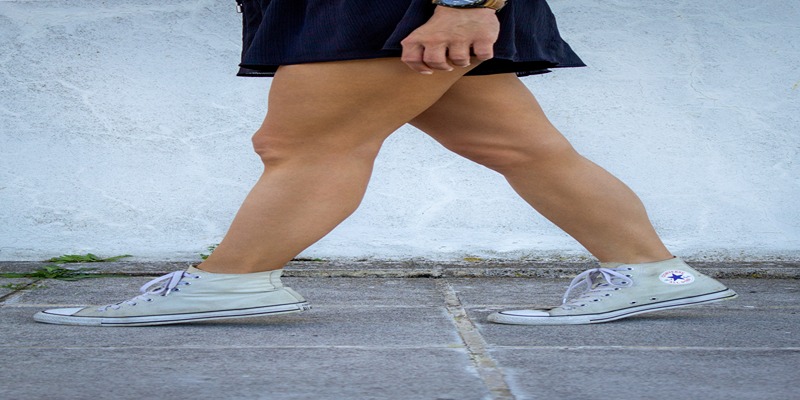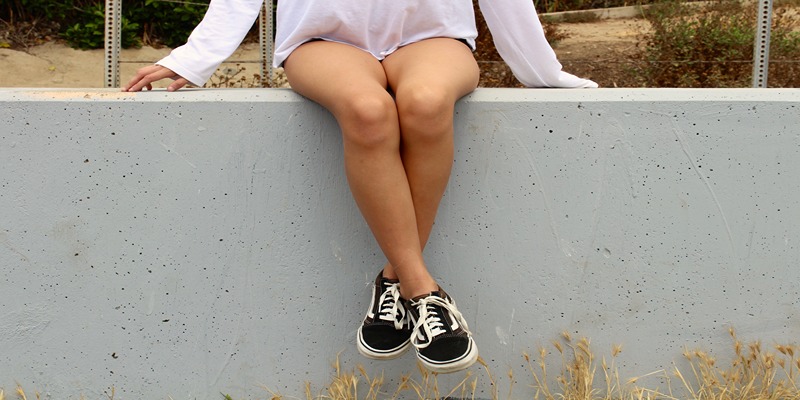A Comprehensive Examination of Strategies for Minimizing Visible Leg Veins
Nov 02, 2023 By Madison Evans
A considerable number of individuals have self-consciousness over the visibility of their leg veins. Regardless of their underlying causes (genetics, lifestyle, or age), the presence of these veins might potentially undermine an individual's self-assurance and aesthetic appearance. This comprehensive book explores several techniques, including natural and pharmacological approaches, aimed at diminishing the visibility of varicose veins in the lower extremities. By acquiring knowledge about the underlying reasons and effective remedies, individuals may start a journey towards achieving smoother and more reliable lower extremities.

What Constitutes Visible Leg Veins?
Spider veins, also known as telangiectasias, are characterized by the presence of thin and dilated capillaries that become visible on the surface of the skin. The coloration of these structures may vary within the spectrum of red, blue, or purple, and they often exhibit patterns reminiscent of spider webs or the branching patterns seen in trees. While these objects may not provide any potential health hazards, they are visually unappealing.
Varicose veins refer to the condition characterized by the enlargement, distortion, and protrusion of veins in the lower extremities. The observed colors of these manifestations might vary between blue and dark purple, while their common symptom is often described as a sensation of heaviness or discomfort in the lower extremities. Varicose veins often arise as a result of compromised functionality in the valves inside the veins.
Various factors contribute to the formation of aesthetically displeasing veins in the lower extremities, including hereditary predisposition, hormonal fluctuations such as those seen during pregnancy or menopause, weight increase, extended periods of sitting or standing, and the natural process of aging. While individuals of both genders may be impacted, women seem to have a higher degree of susceptibility.
Prevalence and Concerns Surrounding Leg Vein Appearance
Epidemiological investigations have shown that a majority of people will experience the manifestation of leg veins at some point throughout their lifespan. Spider veins afflict between 10% to 30% of the population, with varicose veins disproportionately affecting the elderly.
The presence of visible veins on the legs may give rise to significant psychological and physiological implications. From a psychological standpoint, the exposure of one's veins might potentially have detrimental effects, since it often elicits feelings of embarrassment among individuals. Physical sensations such as pain, swelling, and itching have been associated with the presence of visible veins, particularly in the context of varicose veins. The aforementioned issues underscore the need of comprehending the techniques for concealing leg veins and addressing associated difficulties.
Non-Surgical Options for Leg Vein Treatment
Topical Creams
Non-surgical methods may be used to address the issue of visible leg veins, such as the application of topical therapies. The ingredients included in these lotions often claim to possess the ability to reduce the prominence of spider veins and promote a more uniform complexion. The effectiveness of several topical creams formulated for this specific purpose exhibits significant variability.
Several topical cream components, such as vitamin K, vitamin E, and horse chestnut extract, have been suggested to potentially enhance blood vessel health and reduce the appearance of redness or discoloration associated with spider veins. The use of these creams often involves topical administration, when they are gently massaged into the affected areas.
Topical interventions have the potential to mitigate the visibility of leg veins; however, their effectiveness is subject to variation, and the observed advantages may not manifest immediately or exhibit substantial magnitude. The efficacy of consistent consumption over time may vary across individuals, since it may provide discernible outcomes for some individuals while not producing obvious effects for others.

Compression Garments
The use of compression garments offers a non-invasive alternative to the surgical removal of veins from the lower extremities. Compression stockings and socks are two instances of customized clothing that have been specifically engineered to provide consistent pressure to the lower extremities.
Patients who have been diagnosed with varicose veins or other venous conditions are often advised to use compression garments. Compression garments aid in enhancing venous return to the heart, hence mitigating the likelihood of thrombus formation and minimizing the prominence of veins.
The efficacy of compression garments may be influenced by both the severity of the illness and the extent to which they are used. Regular use of compression stockings has been shown to provide relief from discomfort and reduce edema in a significant number of individuals. Nevertheless, the impact on visibility may be negligible when considering aesthetic concerns associated with spider veins or minor varicose veins.
Lifestyle Changes
Leg veins may be better managed and their appearance reduced by adopting a few simple lifestyle adjustments. Regular exercise may be helpful, particularly if it focuses on building muscle in the legs and increasing circulation. Vascular health may be enhanced with regular exercise including walking, cycling, and swimming.
Leg veins may be prevented or alleviated in part by maintaining a healthy weight and drinking enough of water. Vascular health may be aided by maintaining a healthy body weight, getting enough sleep, and eating foods high in antioxidants.
However, in other circumstances, when genetics and other factors play a big influence, even making these modifications to your lifestyle may not be enough to completely eradicate visible leg veins. The best changes to your lifestyle for your medical condition might be determined by consulting with a healthcare practitioner.
Surgical and Clinical Approaches for Leg Vein Treatment
When conservative methods are ineffective or when the presence of visible veins in the lower extremities is causing significant discomfort or functional impairments, it may be necessary to seek surgical and therapeutic interventions. Possible therapeutic options for various venous disorders include endovenous ablation, laser therapy, and sclerotherapy. Sclerotherapy is a medical process involving the injection of a specific solution into targeted veins, resulting in their collapse and subsequent disappearance. Visible veins may be effectively eradicated by the use of laser therapy. Endovenous ablation is a medical procedure that involves the use of heat to cauterize aberrant veins.
Conclusion
Surgical as well as non-surgical methods exist for treating and concealing unsightly veins in the legs. Compression garments, lotions used topically, and changes to one's lifestyle (including exercise and nutrition) are all non-invasive alternatives to surgical intervention. These have the potential to enhance vascular health and diminish the appearance of spider veins in the legs. Clinical and surgical therapies such as sclerotherapy, laser therapy, and endovenous ablation may be effective alternatives to more invasive procedures when non-surgical options have failed. A medical expert should be consulted in order to ascertain the best course of action in any given set of circumstances. Using a mix of these methods, people may take charge of their health and reduce the appearance of spider veins in their legs.








